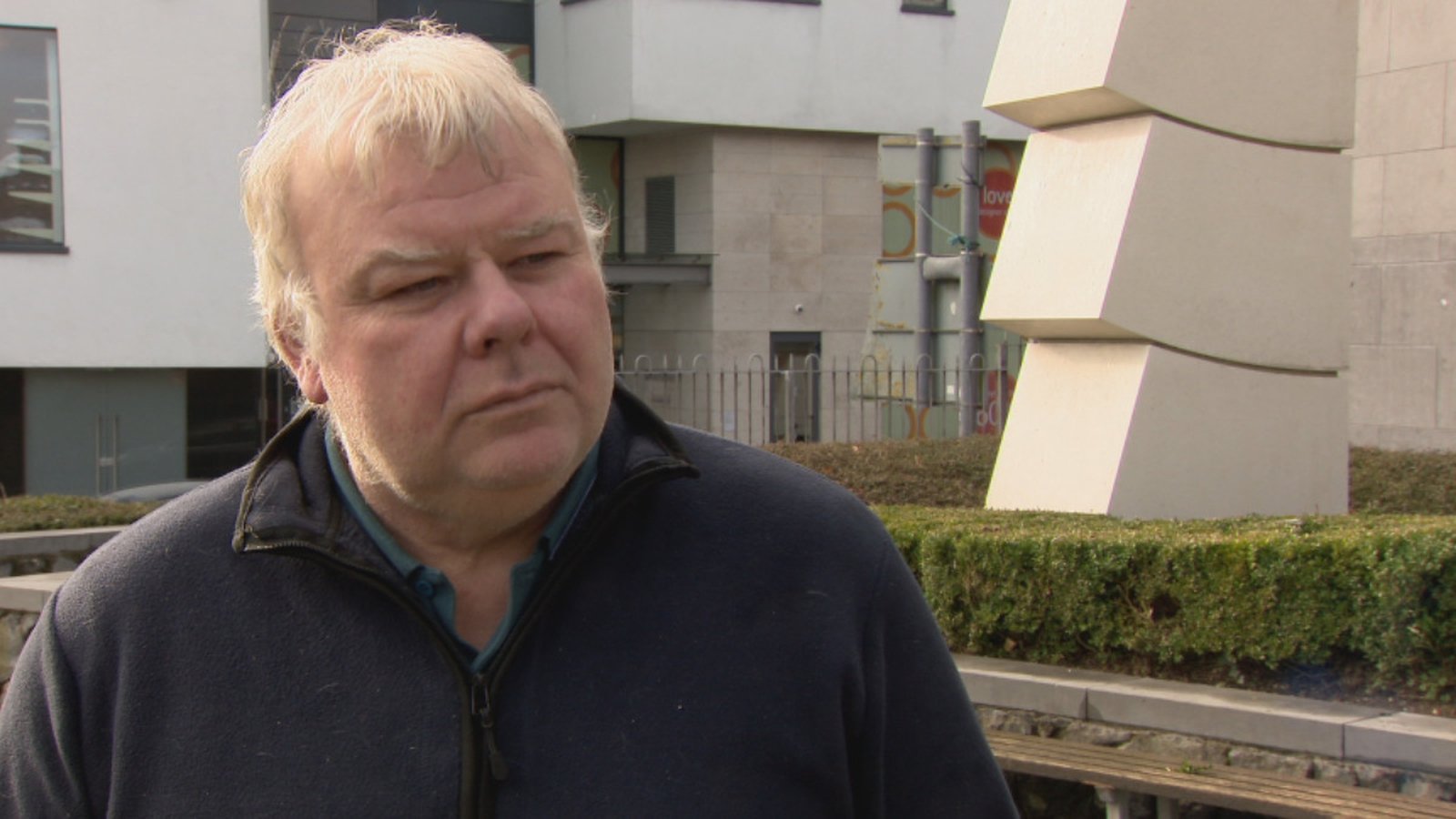The war in Ukraine in numbers
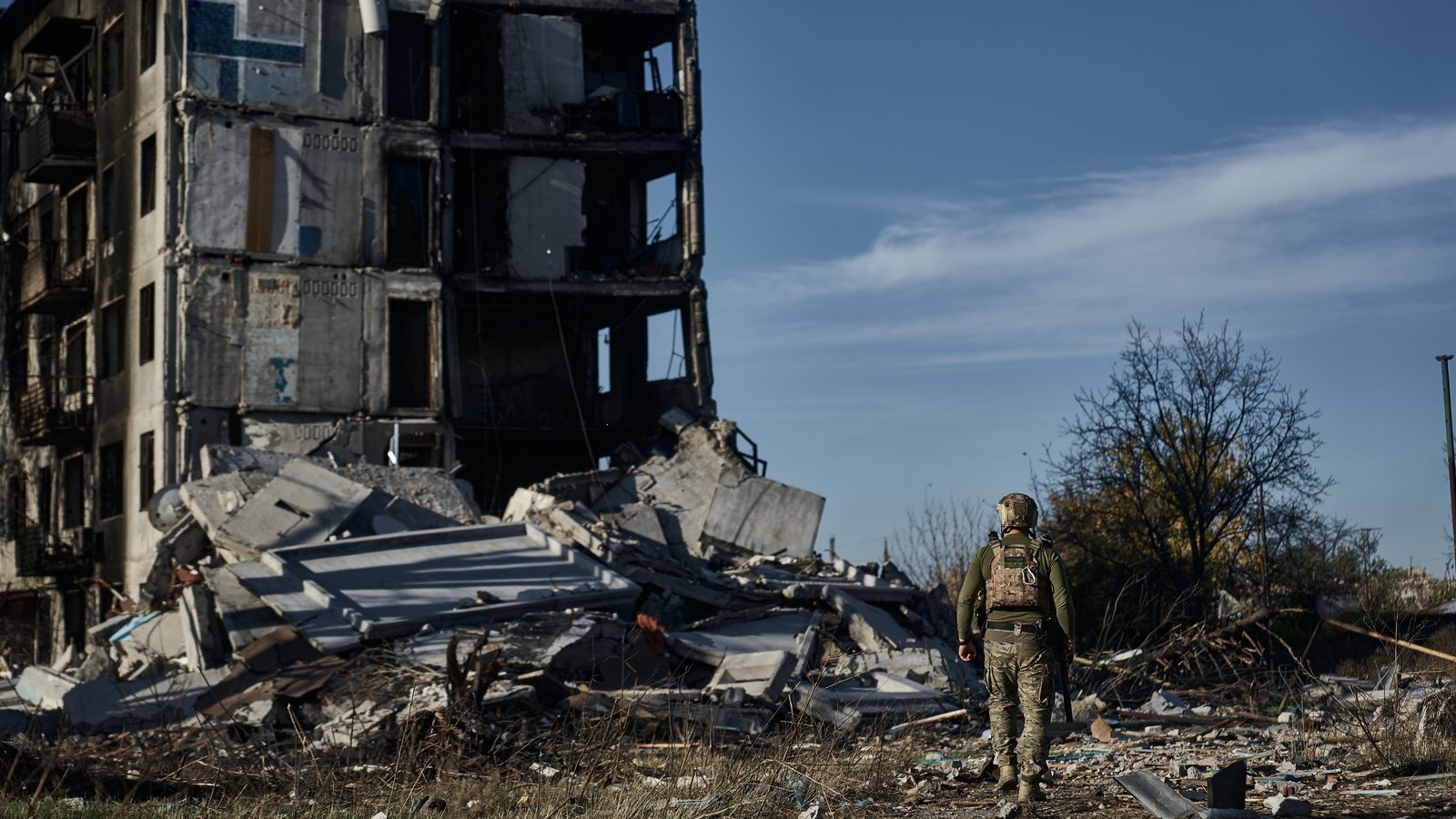
It is now 730 days into Russia’s invasion of Ukraine.
The conflict has upended Ukraine’s population and economy, resulted in thousands of innocent deaths, and destroyed large swathes of the country’s civilian infrastructure.
Last April, the United Nations put the cost of reconstructing Ukraine’s damaged economy at more than €380bn. Almost one year later, that estimate is bound to be much higher.
Ukraine’s economy proved remarkably resilient last year, regaining about half the value of the economic activity it had lost during the first year of the war.
The country’s GDP had decreased by almost 37% in the quarter immediately after the invasion, according to the National Bank of Ukraine.
Russia appears intent on pressing ahead with its war.
Last October, the Kremlin committed to spending almost 30% of its annual budget on military spending – evidence, if ever it was needed, that Russia’s economy has become a war economy.
Even the most hawkish of Western governments, those calling for increased military support for Ukraine, spend at most 2% of GDP on their own national security.
Added to this, the prospect of another Donald Trump presidency in Washington could usher in a new US policy towards the war, one that is more lenient on Russia.
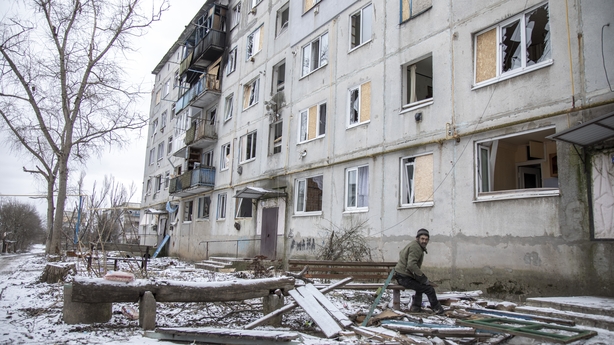
As the war enters its third year, Ukrainians will be hoping that Western military and financial support continues regardless of the result of November’s US presidential election.
A shrinking population
In his New Year’s Eve address two months ago, Ukrainian President Volodymyr Zelensky said the war “unfortunately, separated families, took away sons and daughters, and at the same time united us into one big family”.
Since the start of Russia’s full-scale invasion, millions have fled abroad, seeking temporary protection as refugees across the EU. Smaller numbers have settled in North America.
Within the country itself, 3.7 million Ukrainians have been internally displaced by the war.
“Many young people have emigrated from rural areas to large cities,” Dmytro Naumenko, senior analyst at Ukraine’s Centre for European Policy, told RTÉ News.
The war has accelerated a process of urbanisation, he said, and the majority of the country’s active economic population is set to live in Ukraine’s six largest cities in the coming years.
About 18% of the country is occupied by Russian forces where five million of Ukraine’s population lives.
So how many people remain resident in Ukraine?
Problematically, there has not been a thorough census in the country since 2001.
In 2021, Ukraine’s State Statistics Service estimated that the country’s population was 41 million.
That estimate did not include Crimea, the peninsula illegally annexed by Russia in 2014 that is home to almost two million inhabitants.
So, Ukraine’s pre-war total population, going by its internationally recognised 1991 borders, was close to 43 million.
There are varying data on how many Ukrainian refugees are currently living outside of the country.
Ukraine’s ministry of social policy estimates that 6.3 million people have left the country since the war began.
The latest statistics from the UN’s refugee agency, UNHCR, are similar, suggesting just over six million Ukrainians have sought temporary protection as refugees across Europe.
Another 475,000 Ukrainians have sought refugee status beyond Europe, bringing the total number of refugees to 6.5 million.
There is, of course, a constant flow of Ukrainian citizens moving between Ukraine and EU member states.
Many people who claimed refugee status during the initial phase of the war have returned to live in western Ukraine.

This might explain why data from Eurostat, published last December, calculates the number of Ukrainian refugees within the EU as 4.3 million, much lower than the UNHCR figure.
That number includes the more than 100,000 Ukrainian refugees who have made Ireland their home.
We need your consent to load this Datawrapper contentWe use Datawrapper to manage extra content that can set cookies on your device and collect data about your activity. Please review their details and accept them to load the content.Manage Preferences
A reasonable estimate is that between five and six million Ukrainians are living permanently outside of their country.
Working back from the estimate of 41 million in 2021, today’s population is likely to be closer to 35 million.
Including occupied Crimea, that figure could be 37 million.
More than 10,000 Ukrainian civilians have been killed during the war, according to the UN and Ukraine’s Prosecutor General.
Ukraine had already been battling a demographic problem for the past three decades, with falling birth rates. The war has accelerated this trend.
Data from the Organisation for Economic Cooperation and Development (OECD) shows that, in most host countries, at least 70% of Ukrainian refugees are women. Many are of working age.
And, in a somber forecast, a report last September by Ukraine’s Institute of Demography and Sociological Research outlined a worst case scenario whereby the country’s population could drop to as low as 25 million by 2033.
Some kind of financial support, said Mr Naumenko, will be needed to attract more young and middle aged Ukrainians to return home after the war.
“The most unpredictable factor is in duration of the war,” he said.
Mr Zelensky wants people to return home. In that same New Year’s Eve address, he told Ukrainians that they were “stronger together”.
But, the longer the war continues, more Ukrainians are likely to put down permanent roots in their new countries.
Funding Ukraine
The United States, the world’s largest economy, has been the biggest provider of aid to Ukraine since Russia’s invasion two years ago.
So far, Washington has committed almost $73bn (€67.7bn) in aid to Kyiv, according to the Kiel Institute, a German think tank that has been tracking funding for Ukraine since the war began.
We need your consent to load this Datawrapper contentWe use Datawrapper to manage extra content that can set cookies on your device and collect data about your activity. Please review their details and accept them to load the content.Manage Preferences
Often, sums in excess of $100bn (€92.3bn) have been cited as the total amount of aid provided by the US to Ukraine since Russia’s full-scale invasion began.
Pietro Bomprezzi, an economist who coordinates the Kiel Institute’s Ukraine Support Tracker, told RTÉ News that his team calculates total direct investment into Ukraine itself.
“Aid going to Ukraine, a lot of the time, contains a lot of other stuff,” said Mr Bomprezzi.
“There could very well be a large amount of spending, which is redirected towards NATO exercises or training initiatives and allied countries.”
The US is followed by Germany and the United Kingdom as the next biggest donor countries.
Denmark, which has a population that is slightly larger than Ireland’s, is the fourth-largest donor. For its relatively small size, Denmark has a lot of heavy artillery and fighter jets. It was one of the first NATO members to commit to donating a batch of F-16 jets to Kyiv – 19 of its F-16s will be sent to Ukraine this spring.
This week, Danish Prime Minister Mette Frederiksen said that his country would also donate all of its artillery ammunition to Ukraine. He urged other European countries to do the same.
This follows a general trend among northern European countries, said Mr Bomprezzi, who mentioned Germany, Denmark and the Baltic states as countries which have “really ramped up” their funding in the past six months.
The future of US military aid for Ukraine looks rickety, especially if Mr Trump, almost certain to be the Republican party’s candidate, wins November’s presidential election.
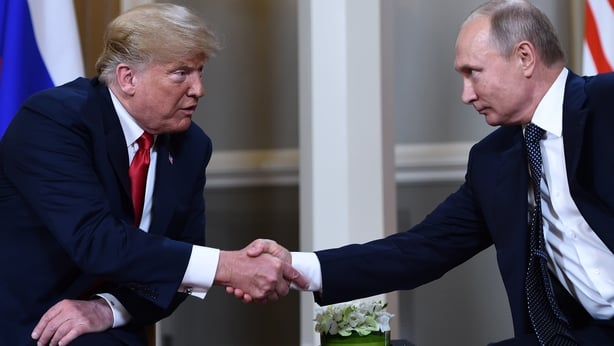
Earlier this month, Mr Trump voiced his opposition to a Senate-approved military aid package for both Ukraine and Israel worth $95bn (€87.7bn) – over $60bn (€55.3bn) of that package is earmarked for Ukraine.
The former Republican president and business tycoon could make an unreliable ally for Kyiv if he wins the presidency for a second time.
During his previous tenure, Mr Trump expressed his admiration for Russian President Vladimir Putin and recently said he could solve the conflict within 24 hours. That rhetoric hints at some kind of deal over territory to placate Moscow.
Earlier this month he also said he would urge Russia to attack NATO members who do not spend 2% of annual GDP on defence expenditure – a required commitment for NATO members.
For the past few months too, hardline Republicans in the House of Representatives have blocked that same $60bn aid package for Ukraine, proposed by the Biden administration.
Speaker of the House Mike Johnson has so far rebuffed demands from Democrats to table a vote on the aid package.
All of this does not bode well for Ukraine as it enters its third year of war.
Mr Zelensky will be acutely aware that a Republican administration in the White House could precipitate a sharp reduction in military aid from the US and, in December, visited Washington to appeal to Republican lawmakers to pass the long-delayed aid package.
Ukraine’s European allies, for all their heavy lifting, will be unable to match the scale of missing US funds for Kyiv.
France, for instance, remains a moderate donor of aid to Ukraine at best. It has committed €1.8bn to date, one fourth of the sum provided by Denmark.
According to the Department of Foreign Affairs, Ireland has provided over €210 million in humanitarian support to Ukraine since the start of the war.
An end to the war is likely to demand a huge increase in humanitarian aid to pay for decades of reconstruction.
War of attrition
Frontline positions in the war have largely remained unchanged since Ukraine’s last big success: regaining Kherson during its southern offensive in November 2022.
Since then, Ukrainian and Russian forces have fought each other to a standstill along the 1,000km frontline.
Ukraine’s counteroffensive, which began last June and petered out in October, resulted in the recapture of just slightly more than 300 square kilometers. That is roughly the size of Malta.
Fighting has been fiercest on the eastern front around the town of Avdiivka where casualties on both sides are thought to have been high.
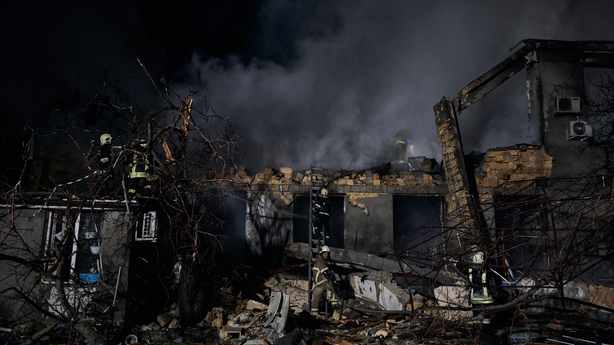
Ukrainian forces withdrew from Avdiivka last week to avoid the complete destruction of its units in the surrounding area.
“Current Ukrainian capabilities are preventing Russian forces from making anything beyond attritional marginal tactical gains,” Riley Bailey, Russia analyst at the Institute for the Study of War, told RTÉ News.
But, he said, Ukraine’s military capabilities “largely depend on continued Western provision of key materiel and systems”.
There are varying estimates of the number of Russian military personnel who have been killed or wounded since the start of Moscow’s full-scale invasion in February 2022.
No official figures have been released by Russia’s ministry of defence since September 2022 when it stated that 5,937 of its soldiers had been killed.
That figure, seven months into the war, was believed to be wildly underestimated by many military analysts.
A joint research project by the BBC’s Russian Service and Mediazone, an independent Russian media service, has confirmed the identifies of 45,000 Russian soldiers who had been killed in Ukraine since February 2022.
On the other hand, one US intelligence report estimated that Russia had lost 315,000 dead or wounded troops since the start of the war.
Russian officials have maintained that western estimates of their country’s casualty figures in Ukraine are exaggerated.
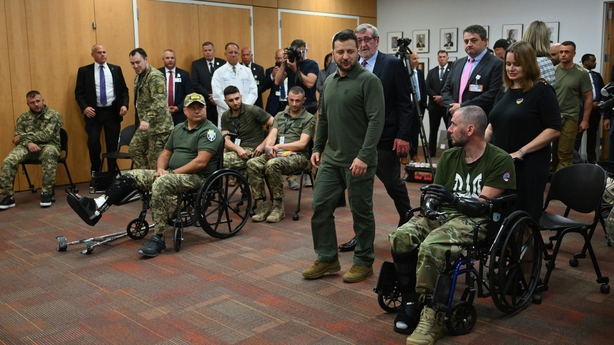
Ukraine’s ministry of defence releases its own estimates for Russian war dead on a daily basis, but does not release figures for its own casualties.
A New York Times report last August cited anonymous US officials who estimated that Ukraine had lost 70,000 people and that 120,000 were wounded in the first 18 months of the war.
Those kinds of casualty rates attest to the ferocity of the warfare in Ukraine and put it on a par with battles from World War II in Europe.
But such high casualty rates have also not deterred Russia’s military high command from launching new localised offensives.
Mr Riley said that Russian forces in the east had already launched offensive operations along the Kharkiv-Luhansk axis and were conducting limited offensive actions near Bakhmut.
“We may see periods of intensification in these areas over the coming months,” he said.





